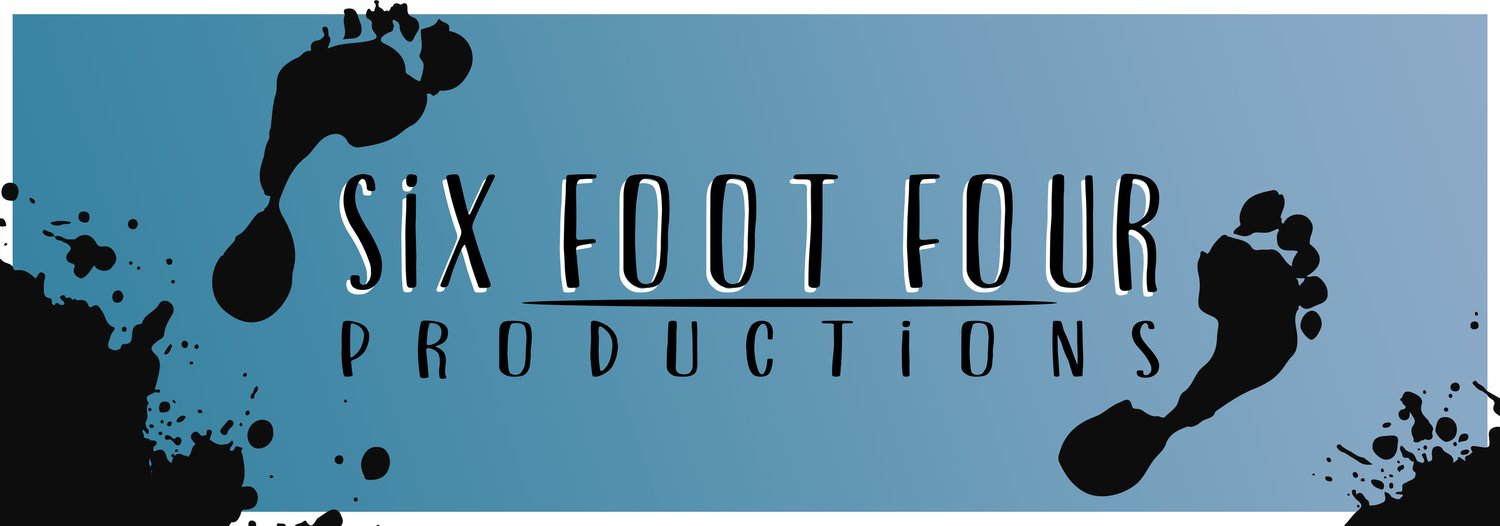Unravelling the Magic: Exclusive Behind-the-Scenes Look at the Making of "Scooter"!
As a filmmaker and business owner, I've always firmly believed in the saying, "Piss Poor Preparation leads to Piss Poor Performance." It's with this mindset that I embarked on the production of my short film, "Scooter." If you haven't seen it yet, you can check it out here:
In this series of posts, I'll be sharing insights, laughs, and lessons from both the production and post-production phases of this passion project.
So grab some popcorn, buckle up, and let's dive into Day 1!
"Scooter" was a unique challenge for me, as I took on the roles of both director and Director of Photography. Armed with a Canon C200 and an incredible crew, I was ready to bring this story to life. One of the many benefits of using the C200 was its ability to capture stunning visuals, even in low-light conditions, which proved invaluable during filming.
True to my belief that the first day should be relatively easy, we kicked off production with a lighter workload. This allowed the crew to gel without too much pressure, laying the foundation for the ensuing controlled chaos of the next four days. Making films is just a form of controlled chaos! Our team consisted of seasoned professionals and fresh faces, and it was mesmerising to watch them come together, each bringing their unique skills and perspectives to the table.
In a break from the norm, we shot most of "Scooter" in chronological order. This made it easier for everyone to understand where the story was at while also giving us the added benefit of following the film's natural progression from Loxton to Adelaide. I truly believe this approach contributed to the authenticity of the film, allowing the actors to immerse themselves in the narrative as it unfolded.
One of the highlights of Day 1 was shooting both the first and last scenes of the film. Those scenes took place in my parent's house, who have been incredibly supportive of my filmmaking endeavours since I was a kid. Their support has played a crucial role in shaping my career, and I'm eternally grateful for their willingness to put up with my filmmaking antics. My parents' house provided not only a familiar environment but also a comforting sense of nostalgia that fueled my creativity.
As we progressed through the day, we tackled various scenes, each presenting its unique challenges. From simulating moonlight with blue gels to creating a sunrise effect with a large scrim and the Nanlite Forza 500, our resourceful crew expertly navigated each obstacle. It was a masterclass in problem-solving, as we continuously adapted to the ever-changing demands of the shoot.
One particularly memorable scene involved the protagonist, Desmond, deciding to embark on his unconventional journey to see his daughter. To create the right atmosphere, we needed to achieve a moonlit effect. With the curtains closed, we hung a window blind on a c-stand and shot a light with a blue gel, giving the appearance of moonlight streaming through the window. To add a little fill to the scene and create a sense of depth, we used a Nanlite PavoTube 30C 4ft that was set to a slightly warmer tone, simulating the glow of house lights. Combining these lighting choices added depth and nuance to the scene, capturing the pivotal moment when Desmond's life takes a dramatic turn.
After wrapping up at my parents' house, we moved on to my grandparents' farm for the carport scene. This was where Desmond meticulously loads up his scooter with a generator and camping gear, preparing for his unconventional journey. The scene was designed to capture a series of small moments to create a montage.
To recreate the look of a sunrise, we set up our large scrim and used a Nanlite Forza 500 to simulate sunlight streaming through the windows. We carefully chose the order of locations so that the sun on both houses would be on the opposite side, granting us full control over the lighting conditions. This attention to detail allowed us to achieve the desired atmosphere, seamlessly blending the natural and artificial light sources to create a visually stunning sequence.
For the last scene of the day, we tackled the driving scenes that were meant to appear towards the end of the film. To maintain full control over the shoot, we didn't film on the side of a busy highway where the scene was set. Instead, we opted for a more controlled environment that allowed us to capture the perfect shot. Unfortunately, despite our best efforts, this scene never made it into the final film. I had to lay down in the back of the car to monitor the two-shot during the drive. Being a not-so-small bloke, it was a pretty funny sight! This humorous moment was a testament to the dedication of our crew, who were willing to go the extra mile (literally) to bring "Scooter" to life.
By the end of Day 1, our crew had truly come together as a cohesive unit. As we wrapped up the day, I couldn't help but feel a deep sense of gratitude for the hardworking team surrounding me.
Creating a film is no easy feat, but with the right people by your side, it becomes an incredibly rewarding journey, and let's be honest, there's nothing quite like watching your vision come to life.
As Day 1 drew to a close, I reflected on the incredible amount of work that had gone into bringing "Scooter" this far. From countless hours spent in pre-production to the meticulous planning of each shot, it was a true labour of love. But perhaps the most important lesson I took away from that first day was the value of teamwork and collaboration. When passionate, talented individuals come together for a common goal, magic truly happens.
So, as we prepared to dive headfirst into the remaining days of shooting, I knew that our team was more than capable of rising to the challenge. And as a director, there's no greater feeling than having complete faith in the people who are helping you bring your vision to life.
Stay tuned for more stories, reflections, and humorous anecdotes from the making of "Scooter." We'll be diving into the following days' ups and downs, sharing filmmaking's trials and tribulations.
This project was made possible by the Australian Government's Regional Arts Australia Fund, Country Arts SA and the District Council Of Loxton Waikerie, which supports the arts in regional and remote Australia.

